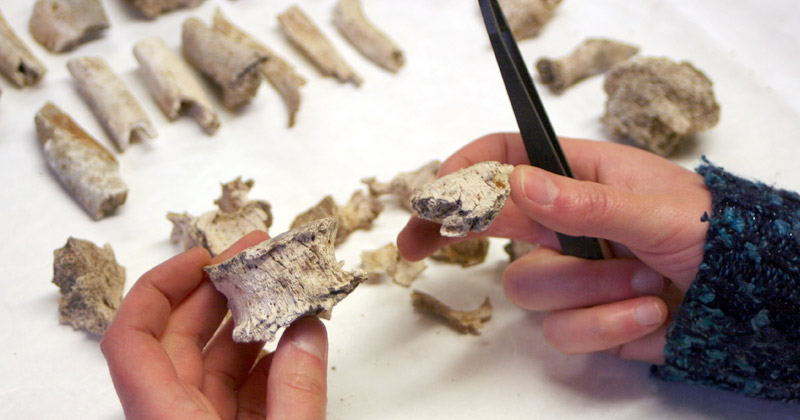In Britain, cremation was the main burial practice from the prehistoric periods (Bronze Age or earlier, 2,100 BC) through to the Anglo-Saxon period (410 to 1150 AD). As a result, cremated human remains are frequently discovered on archaeological sites.
Valuable information can be retrieved through the careful recovery and analysis of cremated human bone which enhances our geographic and temporal understanding of the cremation burial rite. Our understanding of the social and individual variations of the cremation burial rite is also enhanced.
Information gathering
A large amount of information can be gathered from a cremation burial. An urned cremation burial comprises the interment of the individual(s) in a vessel (usually ceramic) which is then interred in the ground. An un-urned cremation burial comprises the interment of the individual in a pit or circular feature without the ceramic vessel.
Analyses of cremated human remains focus on:
- The type of deposit
- Demographic data
- Biological
- Degree of fragmentation and total weight of bone
- The efficiency of the cremation – temperature of the pyre
- The number and type of skeletal elements preserved
- Pathology & trauma
- Pyre goods (artefacts, animal bone [pig/sheep/cow/horse/chicken] and staining on bone)
- Pyre debris – fuel ash, charcoal, stones
- MNI – minimum number of individuals
- Age-at-death, sex determination, ancestry.
Further information
- Non-cremated human remains »
- Commingled human remains »
- Human remains analysis »
- Human remains discovery can halt a development »
- Extensive human remains at new visitor facility »
Source: Wardell Archaeology
